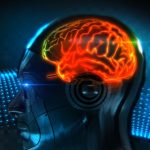Early adopters navigating Tesla’s Full Self-Driving (FSD) suite continue to rack up miles and assessments as the technology evolves with each version. During three weeks of extensive daily use, observations show drivers benefiting from certain FSD capabilities, while noting persistent areas for further refinement. On highways and routine commutes, automated driving features lower stress levels and simulate the comfort of a human chauffeur, offering a glimpse into a future where driver assistance becomes commonplace. Regular use, especially in unpredictable or regional scenarios, uncovers both the software’s adaptive learning and its current limitations.
Compared to reports from earlier FSD versions, recent feedback highlights improved responsiveness to unique road signs and region-specific challenges. Where previous owners found the technology struggled noticeably at certain intersections and stop signs, recent iterations addressed these concerns, notably with better handling of “Except Right Turn” scenarios. However, some recurring issues—such as inconsistent performance of Tesla’s Auto Wipers and difficulties interpreting detailed roadside instructions—remain unresolved. These patterns show incremental but not complete progress, likely influenced by Tesla’s over-the-air software updates and feedback loop from drivers.
How Does Tesla FSD Perform on Highways?
Tesla Full Self-Driving system displays its strongest performance in highway navigation, where lane management and adaptive cruising are its consistent strengths. Many drivers, using varied driving modes like “Hurry,” find FSD smoothly balances speed and safety based on surrounding traffic. Overtaking, merging, and maintaining lanes often occur with little intervention, creating a reliable experience for routine long-distance commutes and fostering trust in the technology’s automated decision-making.
What Are the Main Issues Noted by Drivers?
Despite the progress, several pain points persist. Auto Wipers remain a source of user frustration, frequently operating either too quickly or too slowly, and sometimes activating at predictable road locations regardless of actual weather conditions. Regional signage, like “Stop Here on Red,” poses another challenge—FSD occasionally misinterprets or disregards such instructions, requiring manual intervention for safe crossing. Some subjective preferences, such as lane etiquette or cruising in the fast lane, generate differing opinions among drivers, but can still create discomfort or prompt user overrides. As one Tesla user commented,
“Auto Wipers always seem to give me a good laugh. They never really have the right speed.”
Is FSD Learning From Driver Input?
There are clear signs that Tesla’s Full Self-Driving system is adapting through ongoing driver feedback. For example, repeated encounters with regional stop sign situations have led to demonstrable improvements following user-initiated reports. This iterative process encourages ongoing engagement between Tesla and its customers, driving software enhancements over time. The company states,
“It was nice to see this improvement, especially since this is one of those regional issues that Tesla will need to address before FSD is fully autonomous.”
While Tesla Full Self-Driving v13.2.9 impresses with some everyday conveniences and automates certain stress-inducing driving scenarios, users still find specific functionalities—such as Auto Wipers and complex region-specific signage—lacking the reliability needed for hands-off operation. Real-world testing demonstrates the system’s ability to learn from direct feedback and quickly patch recognized weaknesses. For potential buyers or current users, understanding that FSD’s capabilities vary with location, weather, and unique road infrastructure is critical. Waiting for updates and actively reporting shortcomings can influence improvements, but those expecting fully unattended driving should be prepared for ongoing manual oversight. Consider subscribing on a trial basis before making a long-term commitment, and track Tesla’s update logs for news on feature enhancements and fixes.










